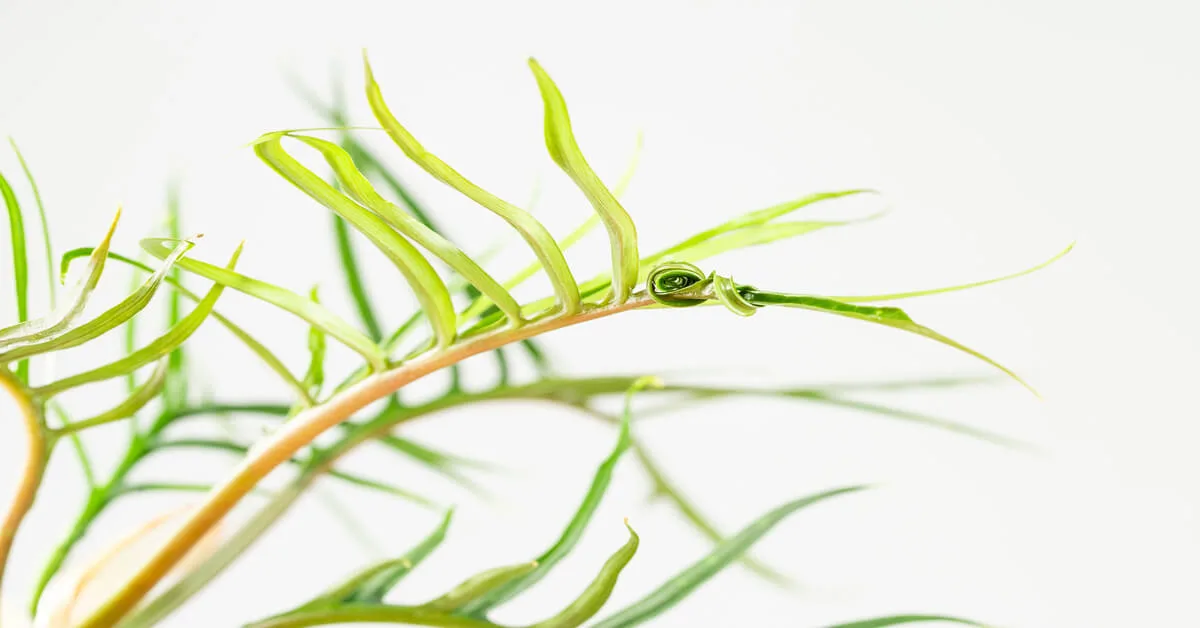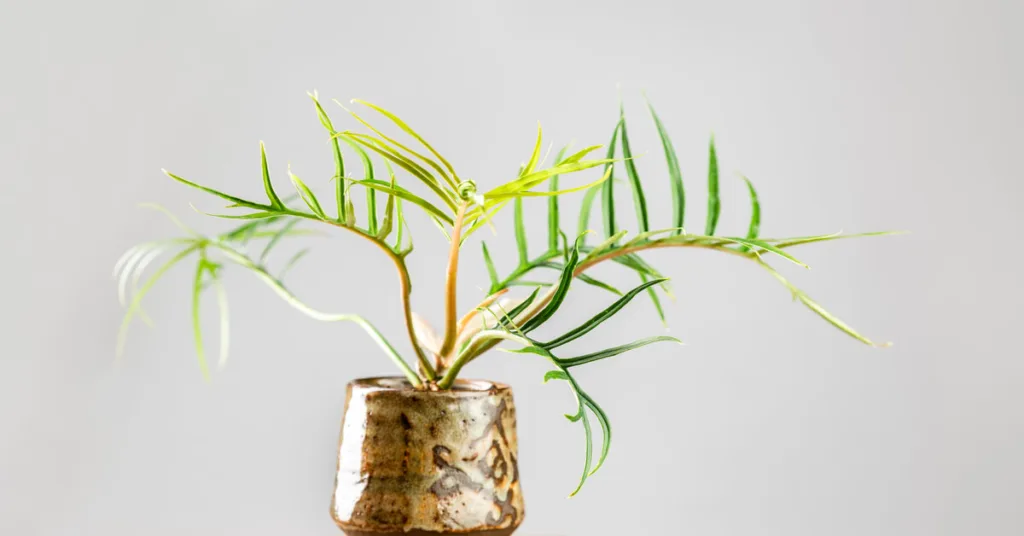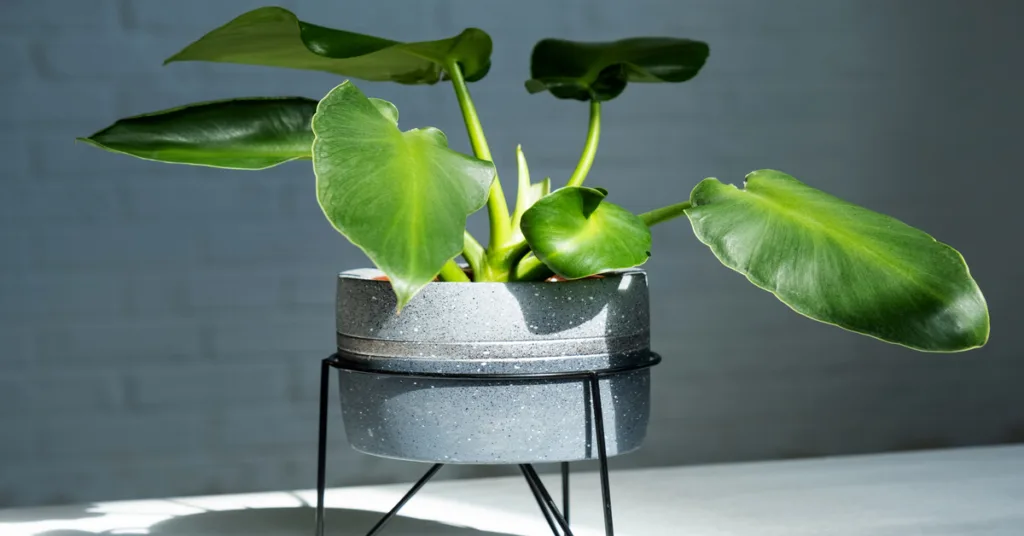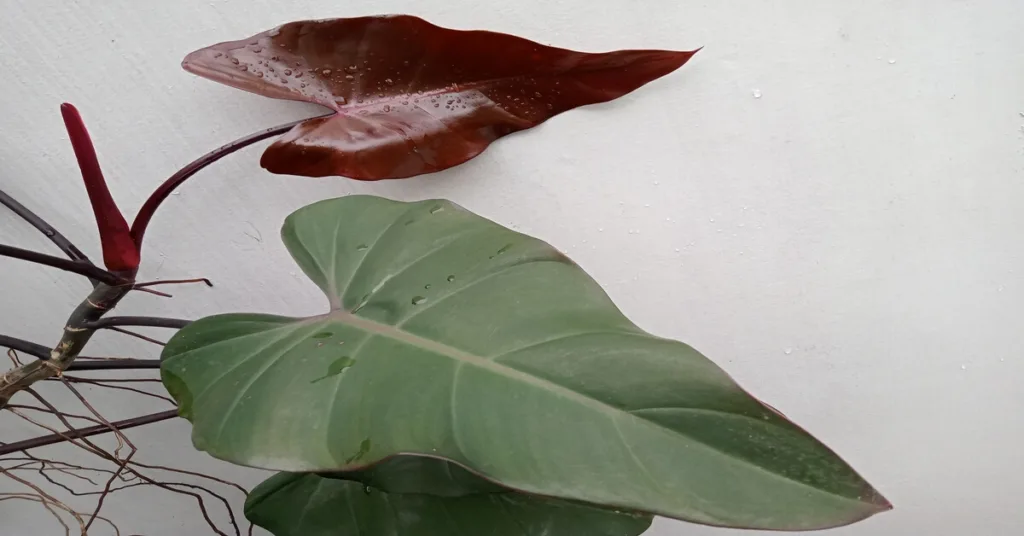Philodendron tortum is a rare, vining plant in the aroid family (Araceae). It has deeply lobed leaves which are often referred to as skeleton key leaves. They can grow up to 6 feet tall when grown indoors with something to climb up.
There are two forms of Philodendron tortum, wide form and narrow form. As the name suggests, wide form P. tortum has wider leaf lobes with less space between each lobe. Philodendron tortum narrow form has thinner leaf lobes, leaving more open space between each lobe.
The origin of Philodendron tortum is the Brazilian Amazon rainforest. The Philodendron tortum flower rarely grows on houseplants. However, if your plant reaches maturity and is grown in optimal conditions it may produce blooms.
Keep reading to learn all about how to grow and care for this magnificent plant.
Philodendron Tortum Care

Philodendron plants are low-maintenance and very forgiving. This is true of Philodendron tortum as well. However, you may want to give this rare, expensive plant a little more attention than a typical Philodendron.
The most common cause of poor Philodendron tortum health is the soil type used and watering issues. Soil should be well draining and you should only add water if the top 2 inches of soil are dry.
Keeping your P. tortum healthy will significantly reduce your chances of it developing diseases. Follow our tips below to keep your plant healthy and happy.
Soil
Philodendron tortum must be planted in well-draining soil. Since it’s an aroid, an aroid soil mix works perfectly. It provides the correct drainage, moisture retention, and an ideal neutral to slightly acidic pH.
You can purchase a premade aroid mix or make your own. Use equal parts of perlite, peat moss, and orchid bark when making your own.
Watering
To prevent leaf damage and root rot, you’ll need to be mindful of when to water Philodendron tortum. From spring to fall, when it’s actively growing, you’ll likely need to water it thoroughly once a week. However, the necessary frequency will depend on the temperature and humidity in your home.
It’s best to check for soil moisture before watering. Stick your finger into the soil 2 inches deep. If you don’t feel moisture, it’s time to water.
Place a saucer below the plant and water until water begins to fill the saucer. Leave the plant in the saucer for 15 minutes. Then, dump the remaining water out of the saucer.
Don’t leave your plant sitting in a saucer of water or root rot may develop. You can reduce water to once every other week in winter.
Lighting
Philodendron tortum thrives in bright indirect light. It prefers to get 10 to 14 hours of light per day.
This plant can grow in lower light levels but growth will be slower. Keep it out of direct sunlight which can scald the leaves.
Humidity & Temperature
You should provide Philodendron tortum with at least 60% humidity. Lower humidity levels can cause the leaves to wilt, curl, or develop brown tips.
You can increase the humidity around your plant by placing a tray of pebbles below the pot. Fill it with water but don’t let the pot touch the water. Alternatively, you can mist Philodendron tortum every few days to increase humidity.
Temperatures should remain between 60 to 85 degrees Fahrenheit for optimal growth. P. tortum will tolerate temperatures down to 50 degrees Fahrenheit. However, lower temps will slow the growth rate.
Fertilizing
Adding a balanced, liquid fertilizer to your plant from spring to fall will improve growth. Philodendron tortum can be fertilized with a diluted 1-1-1 liquid fertilizer once per month.
Don’t over-fertilize your plant. Over-fertilizing can cause root damage.
Propagation
Philodendron tortum can be propagated in the same ways as other Philodendrons. You can divide plants, use plant cuttings, or air layering. However, the best method to use is stem cuttings.
You can propagate a stem cutting taken from the tip of a vine that has at least 1 leaf. Make sure to cut the stem about ¼ inch above the last leaf you’ll be leaving on the parent plant. This will ensure you have enough stem to bury.
Place the cutting 2 to 4 inches into the soil. Keep the soil moist but not soaked, for at least 4 weeks. This will ensure the cutting gets enough water until the roots begin to develop.
Diseases & Pests
Root rot is the most common disease issue for Philodendron tortum. It is caused by overwatering and poor drainage. You can avoid this issue by using well-draining soil, a pot with plenty of drainage holes, and checking the soil moisture before watering.
Other diseases that can occur are bacterial leaf spots and bacterial blight but they are rare[1]. Pests that can infest P. tortum include mealybugs and spider mites.
Check plants for signs of disease and pest damage every time you water them. This will allow you to catch issues early, making them easier to correct.
Toxicity
Philodendron tortum is toxic to humans, cats, and dogs. The plant tissue contains calcium oxalates which cause a variety of unpleasant symptoms.
Ingesting Philodendron tortum can cause pain in the mouth and throat[2]. This can lead to drooling and vomiting. Ingestion can also cause swelling of the lips, mouth, throat, and airways[2].
Philodendron tortum vs elegans
The main difference between Philodendron tortum and elegans is the size and number of leaf lobes. P. tortum has thinner lobes and fewer lobes per leaf than elegans.
The petioles of the leaves are also different. P. tortum has fine thin purple vertical lines on the petiole while P. elegans has light green spots at the base.
Though flowers are rare when these plants grow indoors, they also differ. The spathe of Philodendron tortum is light green to white. The spathe of Philodendron elegans is darker green to greenish pink.
References:
[1] Moorman, G.W. (2016). Philodendron Diseases. PennState Extension.
[2] Plants Toxic To Animals. (2022, May 11). Illinois University Library.



